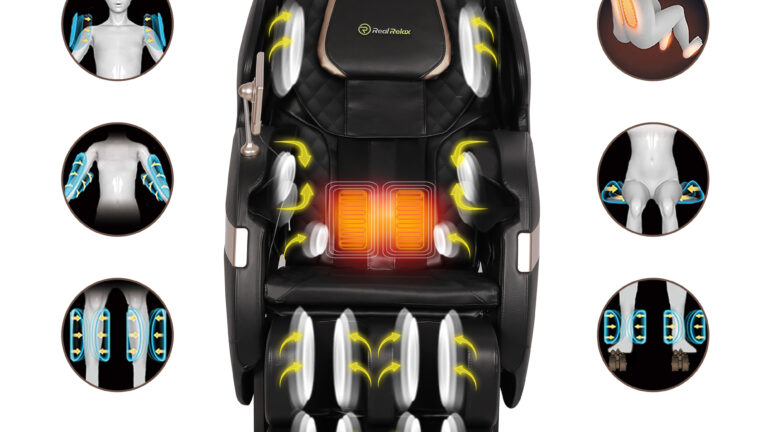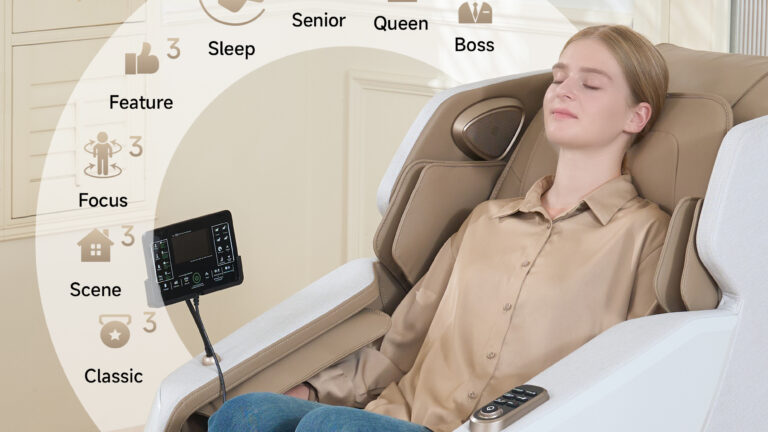If you’ve just bought a massager chair or are thinking about getting one, you might be wondering how often you can use it. After all, it’s easy to get excited about the idea of a relaxing, soothing massage at home, but you want to make sure you’re using it the right way. The good news is, there’s no one-size-fits-all answer because it really depends on your body, your needs, and the kind of massage you’re getting. But don’t worry! I’ll break it down for you so you can get the most out of your home massage chair without overdoing it.
How Often Can You Use a Massager Chair?
First things first: You can use your massaging chair as often as you like, but there are a few things to consider before you start hopping in it all day long. The general rule of thumb is to listen to your body. If you feel great after a massage, go ahead and enjoy it again. But if you start feeling sore, tired, or uncomfortable, you might want to dial it back a bit.
Most experts recommend using a massager chair once or twice a day for short periods. That’s enough to reap the benefits of a relaxing massage without over-stressing your muscles or joints. Let’s break it down by how often you should use it depending on the situation.
For General Relaxation
If you’re using your home massage chair for general relaxation after a long day or to de-stress, using it once a day for about 15 to 30 minutes is usually perfect. A short massage can do wonders for reducing stress, calming your nerves, and helping you unwind. The back massage chair can target key areas like your shoulders, neck, and back, where tension often builds up from sitting at a desk or standing all day.
If you’re looking to relax before bed, a quick session in your massaging chair can also help you wind down. The soothing vibrations and gentle movements of the chair can activate your body’s relaxation response, making it easier to fall asleep.
For Muscle Recovery or Pain Relief
If you’re using a massaging chair for muscle recovery, pain relief, or to target chronic pain areas, you might use it more frequently—once or twice a day. For example, if you’ve had an intense workout or been sitting at a desk for hours, using a back massage chair can help reduce soreness and improve blood circulation. The gentle kneading or deep tissue settings can also work wonders for relaxing tight muscles and alleviating pain.
However, if you have specific conditions like muscle strain, arthritis, or sciatica, you might want to use the chair more often. In these cases, it’s a good idea to start slow with shorter sessions and gradually increase the duration as your body gets used to the treatment.
How Long Should Each Session Be?
When it comes to how long you should sit in your chair for a massage, aim for 15 to 30 minutes per session. Longer than that, and you may end up over-stimulating your muscles or joints, leading to soreness. For more intense treatments, like deep tissue massage or targeted pain relief, start with shorter sessions (around 15 minutes) to see how your body reacts, and gradually build up.
While it’s tempting to sit in your massaging chair for hours, remember that it’s better to use it for shorter, more frequent sessions than one long, intense session. Think of it like exercise—moderation is key.
Signs You’ve Had Enough
It’s important to pay attention to how your body feels during and after using your massaging chair. Some soreness is normal, especially if you’re targeting tight muscles, but if you start to feel any of the following, it’s a sign to take a break:
- Muscle Soreness: If you feel achy or tender in the areas where you’ve had a massage, it could mean you’ve overdone it. It’s okay to feel a little soreness, but if it’s painful, cut back on your usage.
- Dizziness or Lightheadedness: If you feel dizzy or lightheaded after a massage, stop using the chair immediately and drink some water. It could be a sign of over-stimulation, dehydration, or low blood pressure.
- Numbness or Tingling: Any feeling of numbness or tingling is a red flag. If this happens, stop using the chair and give your body time to recover. It might be an indication that you’re putting too much pressure on certain areas.
How Often Can You Use a Massager Chair for Specific Health Issues?
- Chronic Back Pain: If you suffer from chronic back pain, a back massage chair can be a great tool. However, using it too much could aggravate the problem. Start with shorter sessions, around 15 minutes, and increase gradually. Two sessions per day may be fine, but if you notice any increase in discomfort, cut back.
- Neck and Shoulder Tension: People who spend a lot of time working on computers or driving can develop neck and shoulder tension. A massaging chair can help alleviate this, but don’t overdo it. Start with shorter, daily sessions (10-15 minutes) and adjust based on how your body responds.
- Muscle Strains: If you’ve had a muscle strain or injury, a massaging chair might help speed up recovery, but be gentle. It’s best to start with lighter, soothing massages and gradually introduce deeper settings once the strain starts healing.
- Arthritis or Joint Pain: If you have arthritis, a gentle massage is a great way to relieve stiffness and pain. Use your massaging chair for shorter sessions, focusing on the areas that are most affected. Don’t overdo it; gentle massage should be enough to improve mobility without causing discomfort.
Can You Use It Too Much?
Like anything, it’s possible to use your chair for massage too much. While the chair itself is built to be durable and handle regular use, your muscles and joints might need some recovery time between sessions. If you use the chair too frequently or for too long, you risk over-stimulating your muscles, leading to soreness or injury. It’s all about balance.
Key Takeaways
So, how often can you use a chair for massage? The short answer: as often as it feels good, but don’t overdo it. Here are a few tips to keep in mind:
- Aim for 15-30 minutes per session, once or twice a day, depending on your needs.
- Listen to your body. If you feel sore, uncomfortable, or dizzy, take a break and reduce the frequency of use.
- Start with shorter sessions if you’re new to massaging chairs or have a specific injury or condition.
- Customize your massage. Many massager chairs come with adjustable settings, so choose the intensity and type of massage that works best for you.
With a little mindfulness, your massaging chair can be an amazing tool for relaxation, pain relief, and overall well-being. Just be sure to enjoy it in moderation, and you’ll get the best results!


